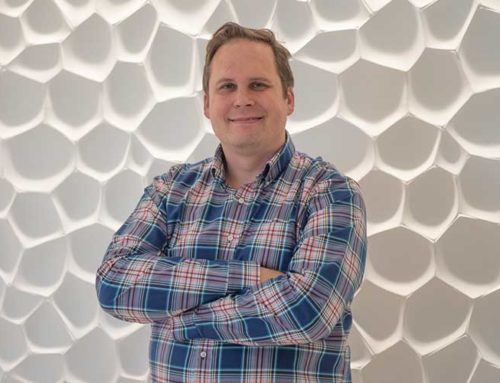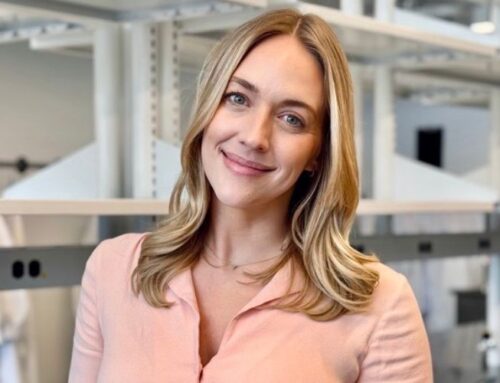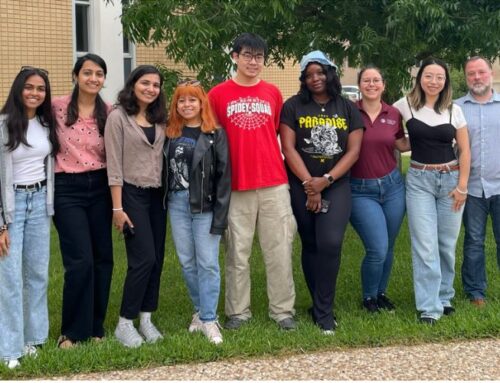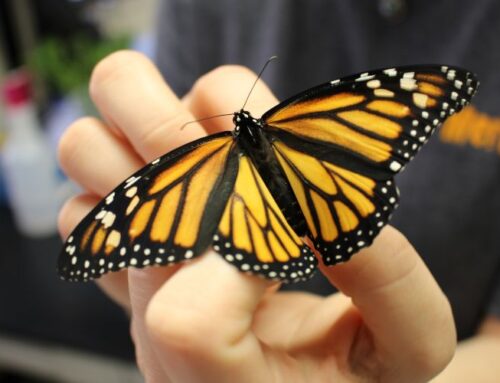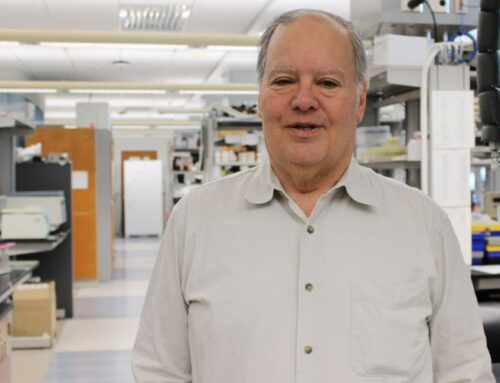Beetles, Biology, and a Second Chance: The Story of Dr. Heath Blackmon
By: TAMU Biology
By the time Dr. Heath Blackmon became the associate head of the Biology Department and chair of the Ecology and Evolutionary Biology Ph.D. program at Texas A&M University, he had not only found his way back to a childhood dream-he had redefined what success in science could look like.
Raised in Fort Worth, Texas, Heath was a kid with a jar full of beetles and a head full of questions. “I collected bugs and dreamed about studying them at Texas A&M. No one in my family had ever gone to college, but I was sure that if I could just get there, I’d figure the rest out,” he recalls. And he did get there—on a full scholarship to study entomology. As a student worker in the university’s entomology museum, Heath spent his days pinning beetles and soaking up the environment he had long imagined. But inside the classroom, the dream faltered.
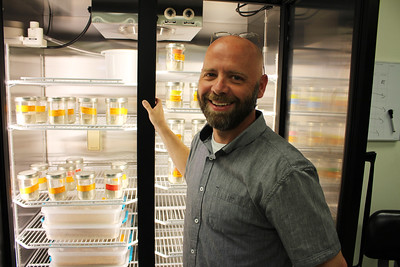 “I was shy, didn’t know how to manage my time or study, and I didn’t know how to ask for help,” he says. “I quickly fell behind in my classes and just couldn’t catch up.” The silence became shame. He didn’t even tell his family he was struggling. They found out when the university sent a letter canceling his scholarship.
“I was shy, didn’t know how to manage my time or study, and I didn’t know how to ask for help,” he says. “I quickly fell behind in my classes and just couldn’t catch up.” The silence became shame. He didn’t even tell his family he was struggling. They found out when the university sent a letter canceling his scholarship.
After failing out, Heath enlisted in the U.S. Air Force. What followed was a slow but steady rebuild. While serving, he began taking community college courses at night, gradually developing the discipline and confidence he hadn’t had before. After completing his service, he returned to civilian life, working at his family’s printing business by day and pursuing a degree online by night through Oregon State University’s eCampus. “When I finally earned my bachelor’s degree summa cum laude, it felt like redemption,” Heath says. But it was only the beginning.
He applied to graduate school, surprised to learn that Ph.D. students not only didn’t pay tuition—they received a stipend. He began a Ph.D. program at the University of Texas at Arlington, diving deep into evolutionary biology, sex chromosomes, and genome structure. The academic environment, once a source of anxiety, had become a source of joy. “I fell in love with research, with teaching, with the whole ecosystem of academia,” Heath says. “It felt like everything I had struggled through was leading to this.”
A postdoctoral fellowship at the University of Minnesota followed, where he continued his work on genome evolution. Then, a job opening appeared at Texas A&M—this time in the Biology Department. The same campus where he had once walked away in silence now welcomed him back as a faculty member. Today, Dr. Heath Blackmon leads two of the largest graduate programs at Texas A&M: the Biology Department’s graduate program and the interdisciplinary Ecology and Evolutionary Biology (EEB) Ph.D. program, which together serve more than 250 students. He also teaches one of the largest doctoral-level classes on campus, a core course in experimental design, training the next generation of scientists in how to ask questions—and how to answer them rigorously.
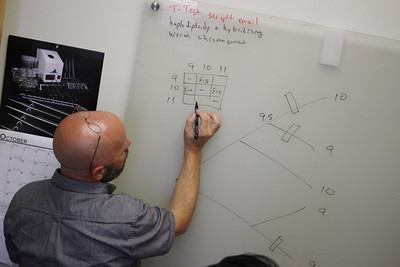 His lab is funded by the National Institutes of Health through a prestigious MIRA (Maximizing Investigators’ Research Award) grant, and his research spans sex chromosome evolution, genome structure, and theoretical population genetics. But if you ask Heath what he’s most proud of, it’s not the research or the accolades. It’s returning to Texas A&M not just as a professor, but as a guide for students who, like him, didn’t have a roadmap. “Coming back to speak in the same entomology seminar series I had once watched as a struggling undergrad—that was surreal. It felt like closing a circle,” he says. And the circle wasn’t only professional. When Heath returned to A&M as a faculty member he met Dr. Jennifer Dulin, a fellow faculty member in biology and proud Aggie. Their shared passion for biology-and for doing science that makes a difference-brought them together. When the time came to propose, there was only one place that felt right. “I asked her to marry me under the Century Tree,” Heath says with a grin. “So yeah, A&M gave me a second chance, a career I love, and the love of my life.”
His lab is funded by the National Institutes of Health through a prestigious MIRA (Maximizing Investigators’ Research Award) grant, and his research spans sex chromosome evolution, genome structure, and theoretical population genetics. But if you ask Heath what he’s most proud of, it’s not the research or the accolades. It’s returning to Texas A&M not just as a professor, but as a guide for students who, like him, didn’t have a roadmap. “Coming back to speak in the same entomology seminar series I had once watched as a struggling undergrad—that was surreal. It felt like closing a circle,” he says. And the circle wasn’t only professional. When Heath returned to A&M as a faculty member he met Dr. Jennifer Dulin, a fellow faculty member in biology and proud Aggie. Their shared passion for biology-and for doing science that makes a difference-brought them together. When the time came to propose, there was only one place that felt right. “I asked her to marry me under the Century Tree,” Heath says with a grin. “So yeah, A&M gave me a second chance, a career I love, and the love of my life.”
He now teaches in Hullabaloo U, Texas A&M’s first-year experience program, where he focuses on mentoring first-generation college students. “I try to be the person I needed back then,” he says. “A lot of students are scared to admit they’re struggling. I want them to know that failure doesn’t define you—it’s what you do next that matters.”

